One size doesn’t fit all: training on farm household typology
Since adopting a one-size-fits-all approach in technology generation and dissemination is unlikely to bring positive results, it is necessary to understand what intervention works for whom, where, and how in order for a program to be successful. Developing farm household typologies to target technology with respect to farmers’ endowments and environmental setting is one of the key components of the SIMLESA (Sustainable Intensification of Maize and Legume Cropping Systems in Southern and Eastern Africa) initiative. To identify farm household typologies from baseline surveys carried out in Ethiopia, Kenya, Tanzania, Malawi, and Mozambique, the initiative organized a two-week workshop between November and December 2012 at the University of Queensland, Brisbane, Australia. The event was attended by economists from the five SIMLESA countries and organized by Daniel Rodriguez, leader of Queensland Australia component of the SIMLESA project.
The first week consisted of lectures by experts in household typologies and household modeling in developing countries, econometric modeling of adoption and impact (facilitated by Menale Kassie of CIMMYT and John Asfau of the University of Queensland), household survey data mining, and the use of survey data to parameterize household models. The participants then prepared and delivered brief presentations covering the objectives, research questions, and hypotheses of the key publications distributed among them; methods and main results; and implications of the publications to their own work.
Reflecting their respective survey datasets, the workshop participants then developed a methodology to identify farm household typologies and, subsequently, a new tool using the free R statistical software. The tool was distributed to each of the participants. The utilized approach not only automates the process, but also ensures that the same methodology is applied to each country’s survey dataset, thereby enabling an easier comparison of the results. The workshop was concluded by a short presentation from each participant outlining their findings.
The feedback on the workshop was very positive: many participants intend to instruct their colleagues in their home countries on the techniques they learned to use during the workshop. The Australian SIMLESA team will continue to provide support on the use of R, as well as access to the script to identify household typologies.
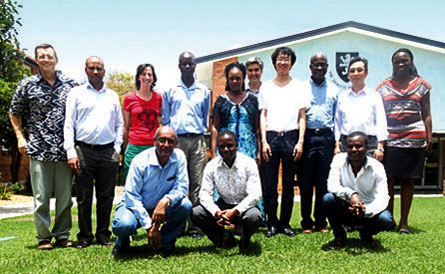
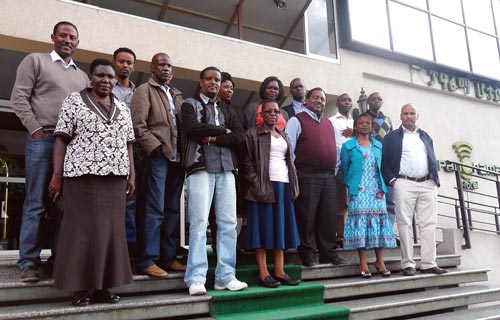 Understanding the value chain of maize and legume crops and the ability to define various actors as well as their contributions and constraints along the value chain is crucial in identifying feasible interventions. Since these activities fall within the scope of the
Understanding the value chain of maize and legume crops and the ability to define various actors as well as their contributions and constraints along the value chain is crucial in identifying feasible interventions. Since these activities fall within the scope of the 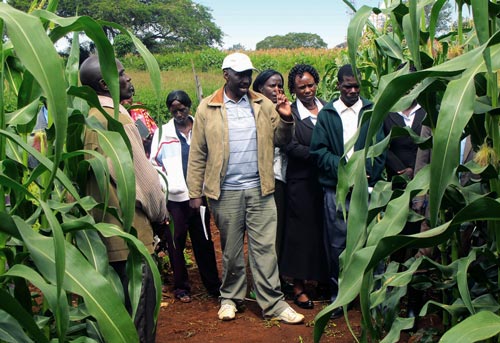 Gender mainstreaming in agricultural development is on the agenda of national governments and the international development community (for more information on CIMMYT and gender mainstreaming see “
Gender mainstreaming in agricultural development is on the agenda of national governments and the international development community (for more information on CIMMYT and gender mainstreaming see “ A serious new disease of maize appeared in the farmers’ fields in eastern Africa in 2011. Called maize lethal necrosis (MLN; or corn lethal necrosis, CLN), it can devastate maize crops. The disease is difficult to control for two reasons:
A serious new disease of maize appeared in the farmers’ fields in eastern Africa in 2011. Called maize lethal necrosis (MLN; or corn lethal necrosis, CLN), it can devastate maize crops. The disease is difficult to control for two reasons: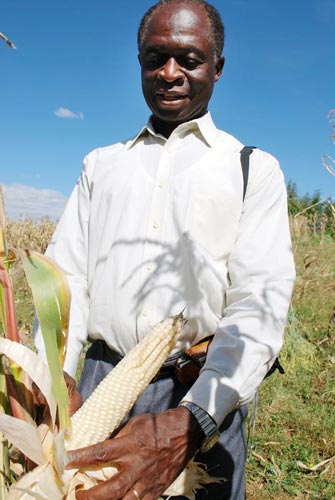 On 03 January 2013, 63-year-old Ghanaian-born maize breeder Strafford Twumasi-Afriyie succumbed to cancer, leaving a substantive legacy that includes the creation of the world’s most widely-sown quality protein maize (QPM) variety,
On 03 January 2013, 63-year-old Ghanaian-born maize breeder Strafford Twumasi-Afriyie succumbed to cancer, leaving a substantive legacy that includes the creation of the world’s most widely-sown quality protein maize (QPM) variety, 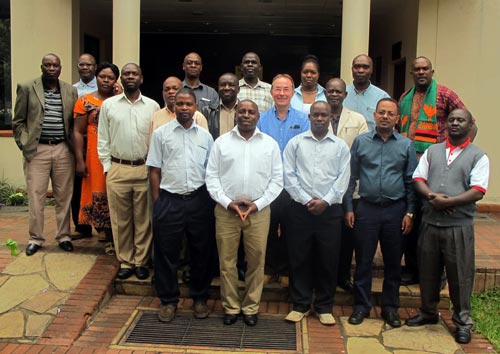
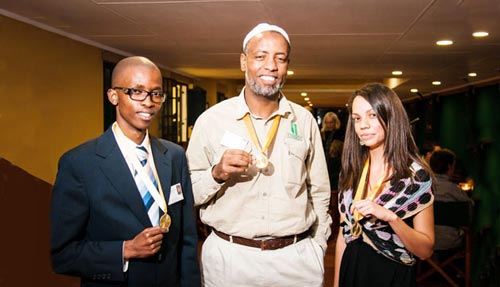
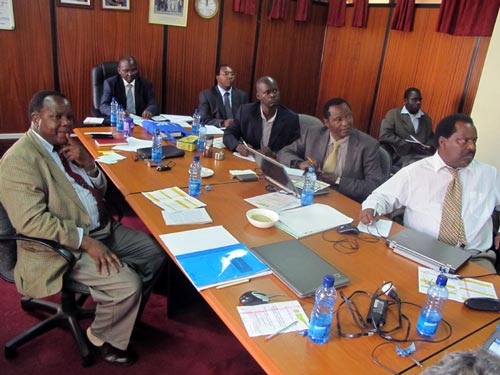 The Kenya Annual Review and Planning Meeting (ARPM) was held during 5-6 November 2012 at the Kenya Agricultural Research Institute (
The Kenya Annual Review and Planning Meeting (ARPM) was held during 5-6 November 2012 at the Kenya Agricultural Research Institute (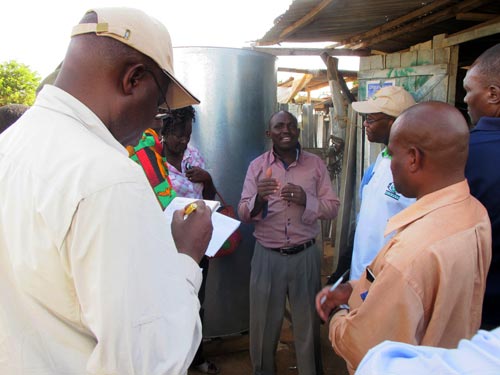 A delegation from Kenya, Malawi, Zimbabwe, and Zambia — the target countries of the Effective Grain Storage for Sustainable Livelihoods of African Farmers (EGSP) Phase-II Project— visited Malawi during 22-23 October and Kenya during 25-26 October 2012 to share experiences with project implementation and to learn about the project’s impact on the livelihoods of smallholder farmers. The delegation comprised of officials from ministries of agriculture and national agricultural research systems from the four EGSP countries, and implementing partners (Kenya Agricultural Research Institute and the Catholic Dioceses of Embu and Homa Bay in Kenya,
A delegation from Kenya, Malawi, Zimbabwe, and Zambia — the target countries of the Effective Grain Storage for Sustainable Livelihoods of African Farmers (EGSP) Phase-II Project— visited Malawi during 22-23 October and Kenya during 25-26 October 2012 to share experiences with project implementation and to learn about the project’s impact on the livelihoods of smallholder farmers. The delegation comprised of officials from ministries of agriculture and national agricultural research systems from the four EGSP countries, and implementing partners (Kenya Agricultural Research Institute and the Catholic Dioceses of Embu and Homa Bay in Kenya, 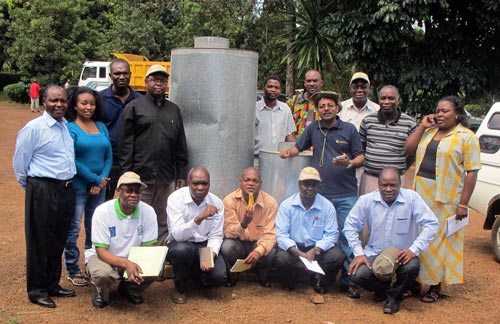
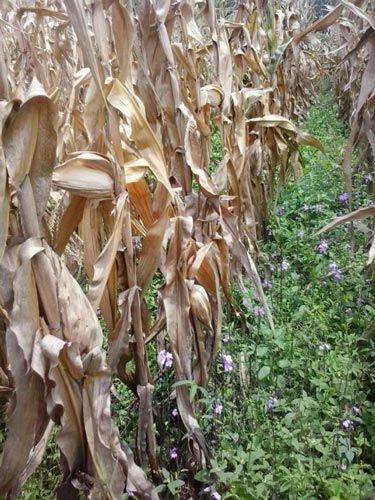
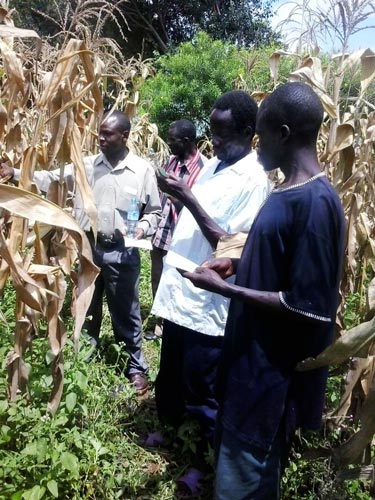 The field day was attended by James Ogwang, director of National Crops Resources Research Institute (NaCRRI) at Namulonge; Godfrey Asea, maize breeder and head of the Cereals Program; Pearl and NASECO seed companies representatives; Sammy Waruingi from BASF; and CIMMYT maize breeder Dan Makumbi and research assistant Edna Mageto. Ogwang urged the farmers to plant only certified seed and move beyond border issues to work together in Striga management. Asea thanked the government and farmers for their support in the fight against Striga. He said the farmers had become good project ambassadors.
The field day was attended by James Ogwang, director of National Crops Resources Research Institute (NaCRRI) at Namulonge; Godfrey Asea, maize breeder and head of the Cereals Program; Pearl and NASECO seed companies representatives; Sammy Waruingi from BASF; and CIMMYT maize breeder Dan Makumbi and research assistant Edna Mageto. Ogwang urged the farmers to plant only certified seed and move beyond border issues to work together in Striga management. Asea thanked the government and farmers for their support in the fight against Striga. He said the farmers had become good project ambassadors.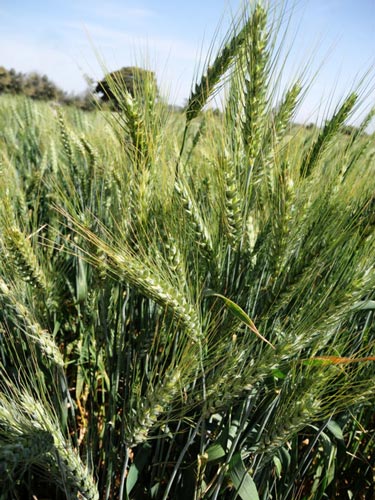 Wheat is increasingly in demand in sub-Saharan Africa as a result of income growth and the demand for convenience foods as more women enter the workplace, but sub-Saharan countries and Africa as a whole produce only about 30% and 40%, respectively, of their domestic requirements, causing a heavy dependence on imports and making the region highly vulnerable to global market and supply shocks.
Wheat is increasingly in demand in sub-Saharan Africa as a result of income growth and the demand for convenience foods as more women enter the workplace, but sub-Saharan countries and Africa as a whole produce only about 30% and 40%, respectively, of their domestic requirements, causing a heavy dependence on imports and making the region highly vulnerable to global market and supply shocks.